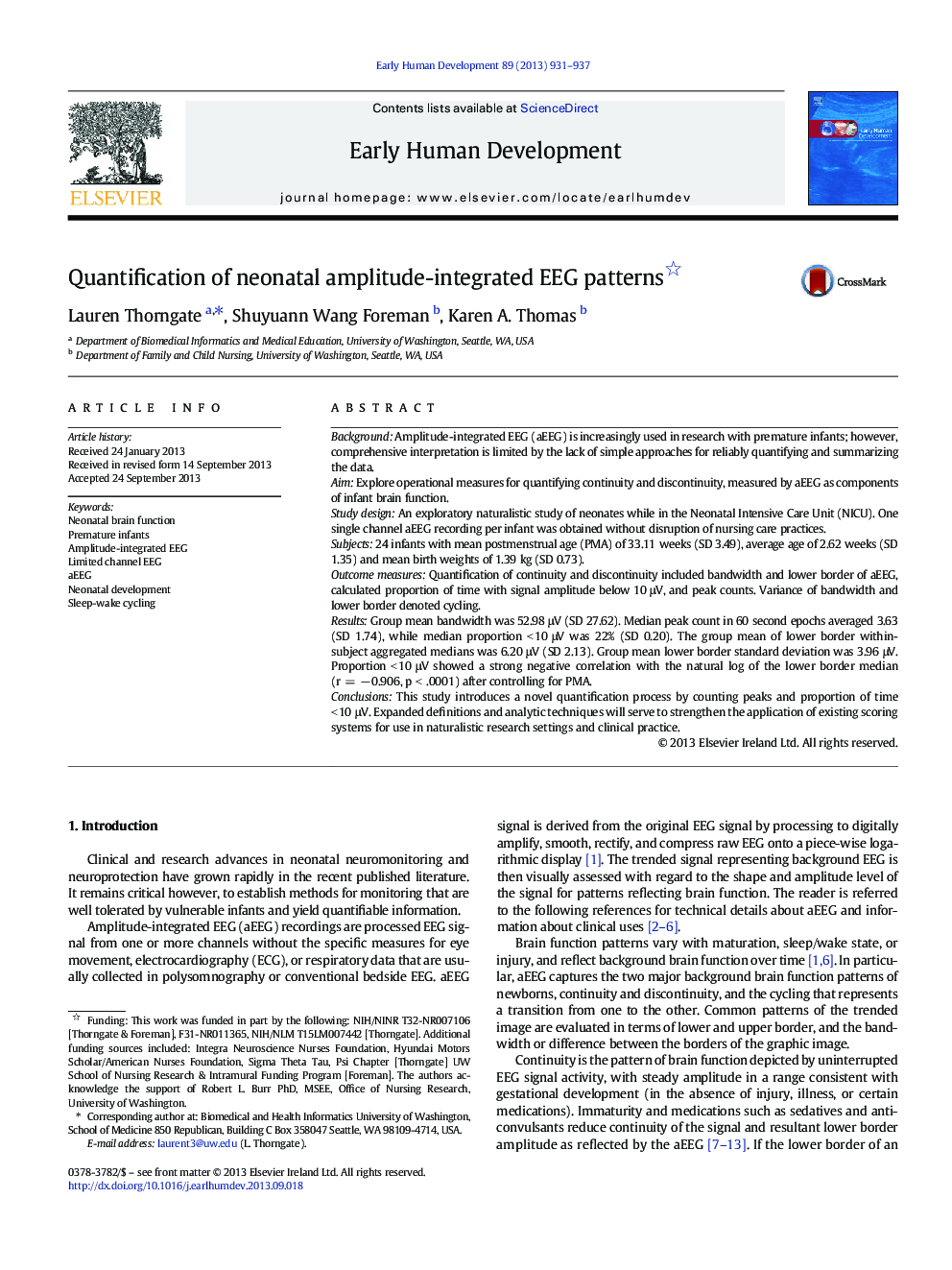| Article ID | Journal | Published Year | Pages | File Type |
|---|---|---|---|---|
| 6171915 | Early Human Development | 2013 | 7 Pages |
BackgroundAmplitude-integrated EEG (aEEG) is increasingly used in research with premature infants; however, comprehensive interpretation is limited by the lack of simple approaches for reliably quantifying and summarizing the data.AimExplore operational measures for quantifying continuity and discontinuity, measured by aEEG as components of infant brain function.Study designAn exploratory naturalistic study of neonates while in the Neonatal Intensive Care Unit (NICU). One single channel aEEG recording per infant was obtained without disruption of nursing care practices.Subjects24 infants with mean postmenstrual age (PMA) of 33.11 weeks (SD 3.49), average age of 2.62 weeks (SD 1.35) and mean birth weights of 1.39 kg (SD 0.73).Outcome measuresQuantification of continuity and discontinuity included bandwidth and lower border of aEEG, calculated proportion of time with signal amplitude below 10 μV, and peak counts. Variance of bandwidth and lower border denoted cycling.ResultsGroup mean bandwidth was 52.98 μV (SD 27.62). Median peak count in 60 second epochs averaged 3.63 (SD 1.74), while median proportion < 10 μV was 22% (SD 0.20). The group mean of lower border within-subject aggregated medians was 6.20 μV (SD 2.13). Group mean lower border standard deviation was 3.96 μV. Proportion < 10 μV showed a strong negative correlation with the natural log of the lower border median (r = â 0.906, p < .0001) after controlling for PMA.ConclusionsThis study introduces a novel quantification process by counting peaks and proportion of time < 10 μV. Expanded definitions and analytic techniques will serve to strengthen the application of existing scoring systems for use in naturalistic research settings and clinical practice.
